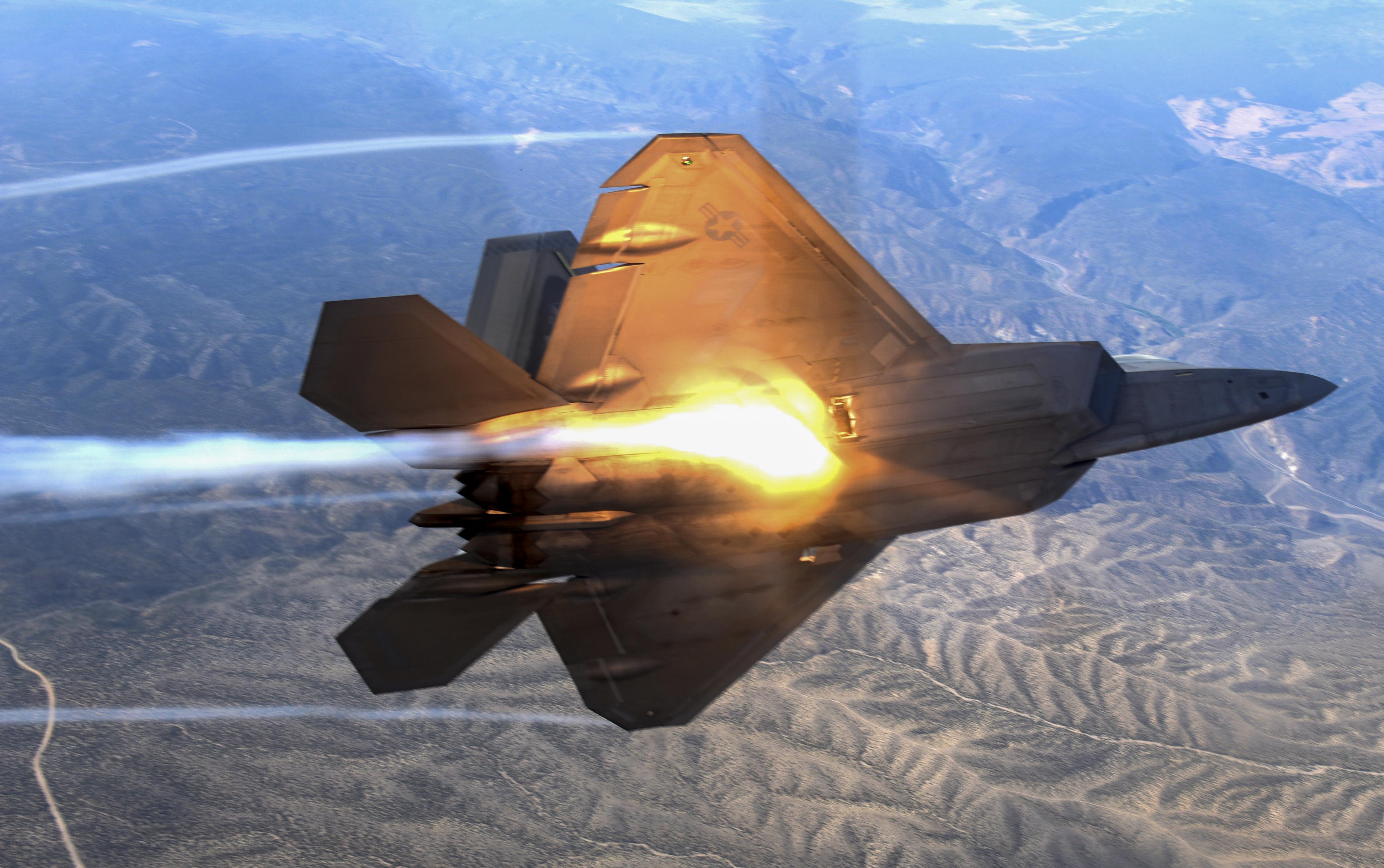An F-22 Raptor, assigned to the 433rd Weapons Squadron, at Nellis AFB, Nev., banks and flies over the Nevada Test and Training Range July 10, 2017. Air Force photo by SSgt. Daryn Murphy.
“Stealth” technology hasn’t been rendered obsolete by new radars and detection methods, and has, if anything, become even more of a critical design consideration for future combat aircraft, according to stealth veterans and experts at an AFA Mitchell Institute program at the US Capitol Wednesday.
Presenting a new report, “Survivability in the Digital Age: The Imperative for Stealth,” authors retired Maj. Gen. Mark Barrett (AFA’s former executive vice president) and retired Col. Mace Carpenter (a senior fellow at the Mitchell Institute) said stealth designs continue to be a relatively low-cost factor in new aircraft design, and are crucial not only to the survival of individual aircraft but in making a smaller force possible.
Without stealth, Barrett said, armadas of support and escort aircraft would be a required part of a strike package against targets protected by modern air defenses. But with modern stealth—as embodied in the F-22, F-35, B-2, and new B-21 bomber—those same missions can be flown with far fewer aircraft.
In air-to-air engagements, said Barrett—a career fighter pilot who commanded one of the first F-22 wings—Russian-made Su-27s and F-16s can see each other at about the same time, meaning “the one with the bigger stick,” or the faster and longer-ranged weapon, will win.
But the US “doesn’t have the biggest stick,” Barrett asserted. By contrast, a stealth aircraft can see and shoot at an Su-27 long before his opponent even knows the stealth jet is in the vicinity, and every engagement is a win for the stealth aircraft, despite its shorter-ranged missiles.
Carpenter, who flew F-117s in combat, said new radars that can detect stealth aircraft at longer ranges still have to track their targets, hand them off to missile batteries, and shoot, and the missile itself has to be able to track the target closely enough to destroy it. Stealth reduces the likelihood of success “at every phase” in that process, he said.
Barrett said that as radars get better, support aircraft in the form of electronic warfare jets can help stealth aircraft by blinding search and track radars with jamming, making it easier to get through to the target. Without stealth, a conventional aircraft, or even a putatively “stealthy” jet with weapons on external stations, would be much easier to spot, track, and target.
Sen. Mike Rounds (R-S.D.) noted that “many of the same larger technological advancements that have evolved stealth have also advanced the threat environment that stealth was initially designed to mitigate.” Technologies such as “wide-band multi-static radar and passive detection systems can be networked with high-powered computers to form a robust network that seeks to deny large swaths of airspace.”
To combat this, there must be a “fusion of technologies” including networks and new sensors on stealth aircraft, “presenting the enemy with a wildly-diverse set of radar returns from conventional and stealth aircraft,” or perhaps “something more active.” He offered that in addition to support platforms like the EA-18G Growler or F-35, “smaller frequency-tailored systems might be suitable for a future unmanned system.”
Barrett said that while foreign powers are starting to field aircraft “that look stealthy,” the US has the advantage of 40 years of working with stealth, figuring out how best to employ it, and foreign powers won’t be able to match that experience for quite some time.
When the F-22 was new, he said, its pilots used the F-15 “playbook,” but soon began to realize that employing the F-22 required “a whole new way of thinking.” Pilots don’t—and shouldn’t—fly close to each other, and could employ new tactics and derive greater value from the jet’s capabilities, he said. The F-22, beside being able to “pick off” enemy fighters at will, is also a stellar “battle manager” by virtue of seeing all the elements of the fight at a glance. The F-35 has similar capabilities, he said.
Countries that are buying the F-35 are, for the most part “not buying the simulator,” and that’s a mistake, Barrett said. Working out the secret, unexpected capabilities of the F-22 required long hours trying things out in the simulator, and that experimental capability was fundamental to deriving the full power from the F-22, he said. Countries “that buy an F-35 to replace the F-4” but don’t invest in the corresponding development of exploiting its capabilities “have a very expensive F-4 on the ramp,” he said.
The key question to be answered by force planners, given the the “comparable” cost of stealth aircraft to non-stealth aircraft, “isn’t ‘why,’ but ‘why not,’” Barrett observed.
